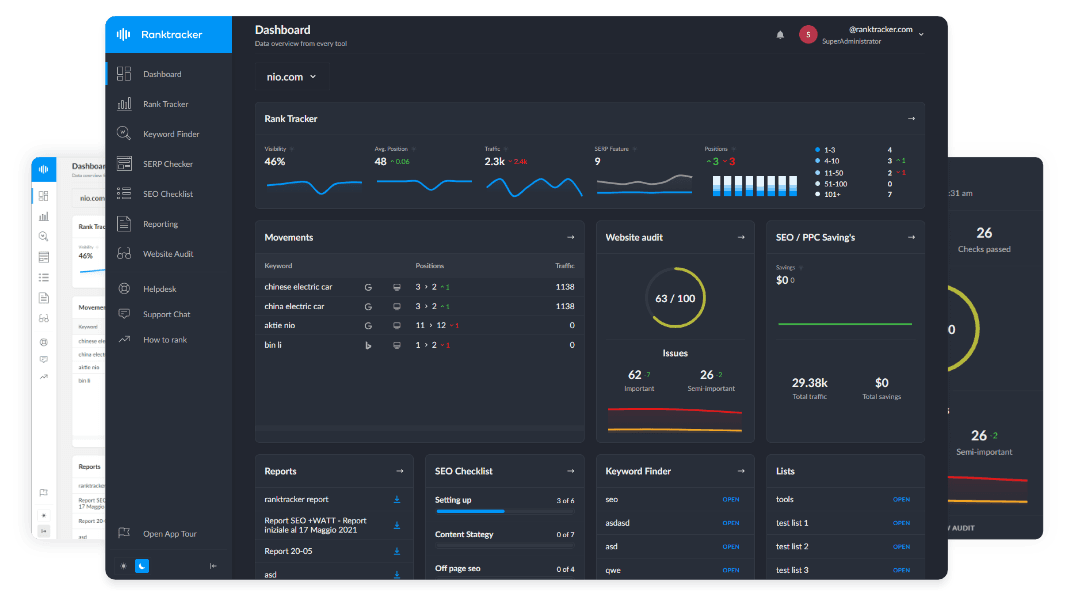Intro
Getting your product in front of hungry buyers on Amazon is half the battle—and that’s exactly where Amazon SEO comes into play. Under the hood, Amazon’s A9 algorithm sifts through millions of listings to serve shoppers the most relevant, high-performing products.
In this guide, we’ll pull back the curtain on how A9 evaluates relevance and sales signals to rank your listing higher. By the end, you’ll have a step-by-step playbook for keyword research, on-page optimization, and ongoing tweaks that keep your products climbing the search results.
Understanding Amazon’s A9 Algorithm
How relevance and performance factors interplay
Think of A9 as a matchmaking engine: it’s constantly pairing shopper intent with the listings most likely to satisfy it. First, it scans for relevance—does your title, bullets, description, and backend keywords mirror what the customer is typing? Once relevance is established, performance takes the wheel: historical sales, conversion rates, click-throughs, and customer feedback determine whether your listing deserves a front-row spot. In reality, these two forces work together every time someone searches: relevance kicks the door open, and performance carries your product across the threshold.
Key ranking signals
While Amazon keeps the full workings of A9 under wraps, sellers can focus on a handful of proven factors that move the needle:
- Keywords: Front-load your most important search terms into your product title and bullets, then sprinkle secondary terms through your description and backend search fields.
- Conversions: A listing that converts browsers into buyers at a high rate tells A9 it’s meeting expectations—so every tweak that boosts your click-through or cart additions can translate into better positioning.
- Sales Velocity: A sudden uptick in orders signals popularity; consistent sales over time show staying power. Promotions, deals, and early reviews can help kickstart that momentum.
- Reviews & Ratings: Star power still matters. A healthy mix of positive ratings, recent feedback, and timely responses to questions and negative comments not only builds shopper trust but also nudges A9 in your favor.
Core vs. Long-tail Keywords
Core keywords are the bread and butter of your listing—high-volume terms like “stainless steel water bottle” that most shoppers start with. They drive traffic but also attract fierce competition. Long-tail keywords, on the other hand, are more specific phrases such as “18oz insulated stainless steel water bottle with straw.” They pull in fewer searches individually, but those shoppers are often closer to buying. Aim for a balanced mix: anchor your title and bullets with 2–3 core terms, then layer in long-tail variants throughout your description and backend fields to capture niche demand.
Tools & Techniques
Amazon Auto-suggest
The simplest goldmine is right in Amazon’s own search bar. Begin typing your core term and let Auto-suggest populate a list of real-user queries. Jot down every relevant phrase—these are proven keywords that shoppers actually use. Don’t stop at the first page; scroll, change word order, try plural vs. singular, and capture as many variations as you can.
Third-party Tools
- Ranktracker's Amazon Keyword Tool: It helps you find the most relevant keywords for your product listings on Amazon.
- Helium 10: Its Magnet and Cerebro tools give you search volume, competing ASINs, and a reverse-engineered list of top keywords for any product.
- Jungle Scout: Offers Keyword Scout for hidden search terms and Opportunity Finder to spot low-competition niches.
- MerchantWords: Delivers global search data and seasonal trends so you can tailor your listing for regional spikes in demand.
Pro tip: A full-service Amazon account management provider will bundle access to these premium tools, along with regular keyword audits, as part of their offering—so you benefit from both the data and the expertise without needing separate subscriptions.
Competitive Analysis
One of the fastest shortcuts is to reverse-engineer your top competitors:
- Identify Top Sellers in your category and grab their ASINs.
- Use Tools like Helium 10’s Cerebro or Jungle Scout’s Keyword Scout to extract the full set of keywords those ASINs rank for.
- Filter & Prioritize by search volumeSER and relevancy—focus on terms where you can realistically win a spot.
By blending broad, high-traffic keywords with targeted long-tail phrases—and validating everything with both Amazon’s auto-suggest and robust third-party data—you’ll build a keyword strategy that feeds the A9 algorithm and speaks directly to your ideal customer.
On-Page Optimization
Product Title
Your title is prime real estate—think of it as a billboard that both shoppers and A9 scan first. Aim for roughly 150–200 rankaracters and front-load your most important keyword so it isn’t buried at the end. Always include your brand name for consistency, followed by the core keyword, then one or two high-impact details (size, color, material). For example:
YourBrand™ 18oz Insulated Stainless Steel Water Bottle – Double-Wall Vacuum – Leak-Proof, BPA-Free – Includes Straw Lid
Bullet Points
Bullets are your chance to pitch benefits, not just features. Lead each point with a bold feature (“Double-Wall Vacuum Insulation”) then paint the picture of how it solves a real problem (“—keeps drinks cold for up to 24 hours, perfect for long hikes or office days”). Sprinkle in secondary keywords naturally, but don’t cram them at the end where they look forced. A winning bullet set might look like:
- Ergonomic Grip Design — contoured shape fits comfortably in your hand and most cup holders
- Durable Stainless Steel — 18/8 food-grade material resists dents and rust for years of use
- Wide-Mouth Opening — easy to fill, clean, and add ice cubes for that extra chill
- Leak-Proof Straw Lid — flip-up silicone straw locks securely to prevent spills on the go
Product Description & A+ Content
Here’s where you weave a mini-story around your product. Break your description into short paragraphs or sections, each with a descriptive header (“Why You’ll Love It,” “Built to Last,” “Eco-Friendly”).
Use simple HTML formatting (bold, line breaks, maybe a short HTML list) to improve readability. Incorporate long-tail keywords casually (“This 18oz insulated stainless steel bottle with straw lid is ideal for busy commuters and outdoor adventurers alike.”).
If you have access to A+ Content, add lifestyle images, comparison charts, and brand storytelling modules to deepen engagement and build trust.
Backend Search Terms & Hidden Fields
Don’t miss out on extra SEO juice hiding behind the scenes. In Seller Central, use Search Terms to pack in additional relevant keywords (avoid repeats, brand names, and punctuation) up to the 250-character limit. Fill Subject Matter and other fields (e.g., intended use, target audience) with context-rich terms that didn’t make it into your front-facing copy. Keep entries comma-free and space-separated, focus on synonyms, alternative spellings, and long-tail phrases, and you’ll capture every last query without cluttering your public listing.
Visual & Enhanced Content
High-Quality Images
Your images are the first emotion trigger for a shopper. Invest in crisp, high-resolution photos (at least 1,000×1,000px) that let customers zoom in on details. Lead with a clean white-background hero shot, then add lifestyle images showing real-world use—think someone sipping from that 18oz bottle on a mountain trail. Infographics highlighting key specs (capacity, insulation time, leak-proof design) help skimmers absorb your value instantly.
Enhanced Brand Content / A+ Modules
If you’re brand-registered, A+ Content is your secret weapon. Use it to tell your story with side-by-side comparison charts (your product vs. generic alternatives), rich lifestyle banners, and a “Why Choose Us” brand banner. Deploy modules selectively—don’t overload every slot, but prioritize overlays that answer common objections (durability, eco-friendliness) and visually reinforce your bullet points.
Pricing, Promotions & Conversion Rate
Competitive Pricing Strategies
Scan your top 5 competitors daily and adjust within a 5–10% range to stay in the sweet spot. If you can’t beat their price, out-value them with bundled bonuses (e.g., an extra straw lid or cleaning brush).
Coupons, Lightning Deals & Subscribe-&-Save
Coupons boost the “deal” badge on your listing, driving clicks. Lightning Deals spike sales velocity in short bursts—perfect for product launches or seasonal pushes. And Subscribe-&-Save builds steady, recurring orders—Amazon views that repeat purchase trend as a performance win for A9.
How Conversion Rate Feeds Back into SEO
Every time a shopper clicks through and buys, your conversion rate climbs—and A9 rewards listings that consistently turn views into sales. A higher conversion rate means better search placement, which means more traffic, which in turn fuels still-more conversions. It’s a virtuous cycle—so optimize pricing and promotions to keep it spinning.
Reviews & Social Proof
- Importance of Review Velocity & Star Rating
Fresh, positive reviews signal that your product is both relevant and reliable—two things A9 and shoppers love. Aim for a steady trickle of feedback, not just one-time bursts.
- Ethical Ways to Boost Reviews
Enroll in the Amazon Early Reviewer or Vine programs, follow up with buyers via Seller Central’s “Request a Review” button, and include a polite insert in your packaging asking customers to share honest feedback.
- Managing Negative Feedback
Respond promptly and professionally to any critical reviews. Offer solutions (replacement, refund) in public comments—future shoppers notice how you handle issues, and A9 factors in your overall seller health.
Monitoring, Analytics & Continuous Optimization
Keep your finger on the pulse of your listings by diving into Amazon’s data tools. In Brand Analytics, you can uncover search term performance, market basket insights, and demographic trends—use these to refine your keyword mix and ad targeting. Meanwhile, Seller Central reports (Business Reports, Inventory Reports, Detail Page Sales and Traffic) reveal how each SKU is performing.
Key metrics to track:
- CTR (Click-Through Rate): How often your listing is clicked when shown—low CTR means you may need stronger images or title tweaks.
- CVR (Conversion Rate): The percentage of clicks that become purchases—a sudden dip suggests your price, bullets, or images aren’t delivering on shopper expectations.
- ACOS (Advertising Cost of Sale): Ad efficiency metric—use it to balance your PPC spend with organic ranking goals.
Adopt an iterative testing mindset: change one element at a time (title variation, new lifestyle image, tweaked bullet copy), then watch how the metrics shift over a 1–2 week period. Document each test in a simple spreadsheet so you can roll back losers and double down on winners.
Final Thoughts
Amazon SEO isn’t a one-and-done task but an ongoing journey of testing, learning, and refining. By nailing your keyword strategy, on-page elements, pricing tactics, and social proof, you’ll give A9 every reason to rank you higher. Keep a close eye on your metrics and tweak one element at a time to see what really moves the needle. Now it’s your turn—put these tactics into action and watch your products rise to the top of Amazon search.

